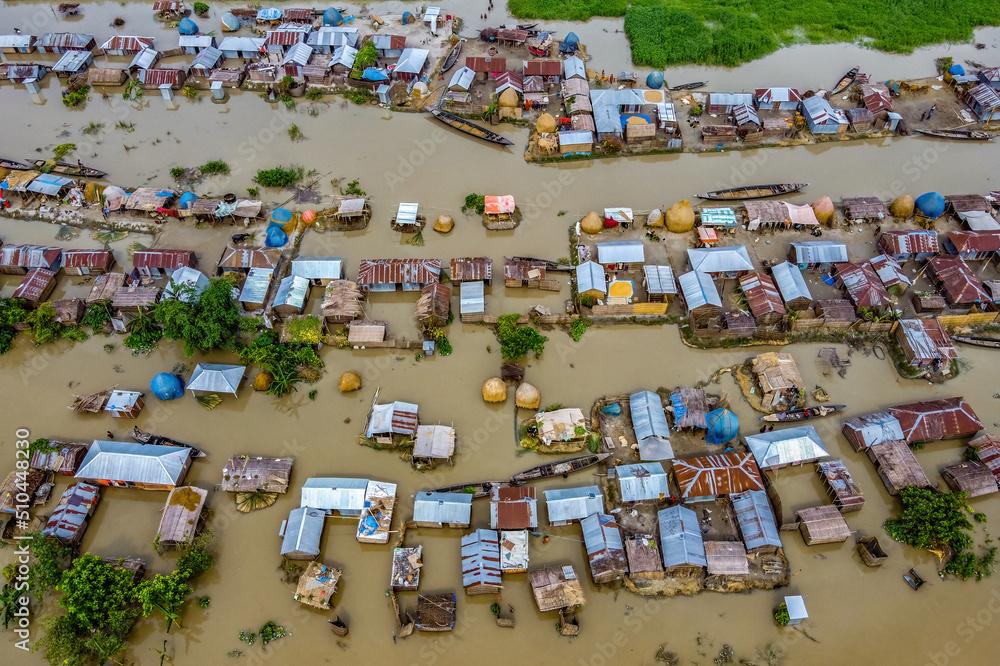Recommended
In Somalia, at least one million people are displaced by drought. In the United States, the federal government is piloting programmes to relocate communities endangered by environmental hazards. In Pakistan, at least eight million people have been displaced by flooding, causing massive damage to life, livelihoods, and shelter. In Australia and elsewhere, more and more homes are becoming uninsurable due to hazards intensified by climate change. This is a slow-cooker issue which will render some areas de facto uninhabitable, leading to gradual movement out of at-risk regions. Here’s a look at how the world responded to these challenges in 2022.
The International Migration Review Forum
In May, the first-ever International Migration Review Forum (IMRF) was held in New York, serving as a spot-check after the Global Compact on Safe, Orderly, and Regular Migration (GCM) was agreed upon in 2018. Climate change was big on the agenda, and some progress was noticeable. A more nuanced view of migration was present: migration was recognised to be affected by climate change but not linearly produced by climate change. ‘Migration as adaptation’, the idea that migration can help people to respond to climate change, was often mentioned. Despite this, little substantive policy progress was reported at the national level. In a report mapping countries’ integration of migration into disaster risk reduction and climate strategies, the Platform on Disaster Displacement found that countries had made progress on Objective 2 of the GCM—minimising the adverse drivers compelling migration— but less progress on Objective 5—increasing access to regular migration pathways.
Argentina’s humanitarian visa
In May, an encouraging new humanitarian visa–announced at the IMRF—also entered into force in Argentina. This is the first effort at a ‘climate refugee’ visa since New Zealand abandoned its own short-lived trial in 2018. Nationals and residents of 23 countries previously not eligible for residency in Argentina (countries in Central America, the Caribbean, and Mexico) can access humanitarian leave to remain for a three-year period in the case of displacement by environmental hazards. The programme also allows relocation to Argentina, providing access to housing, maintenance, and integration support for the initial year upon arrival. This will be managed by partner civil society organisations sponsoring migrants, which will also support migrants’ integration in Argentina. At the end of the three years, permanent residency is possible. The visa operates within a rights-based legal framework, viewing migration as a human right regardless of legal status. However, only sudden-onset disasters are grounds for access, rather than the slow-onset disasters–such as drinking water salination—which will often be more relevant. Depending on the resources made available to Argentina’s immigration services, access may also be a slow process, potentially taking several months for approval to be granted.
IGAD’s Free Movement Protocol and Kampala Declaration
The Inter-Governmental Authority on Development (IGAD) in East Africa has been a trailblazer in responding to climate-affected movement for several years. 2022 was a busy year in the IGAD region; the challenge, as in the case of the Economic Community of West African States’ similar agreement, is to implement free movement in a region facing multiple threats. Its regional free movement agreement is the first to specifically provide protections for those moving in the context of climate change: Article 16 allows citizens “moving in anticipation of, during or in the aftermath of disaster to enter” other states. In a region badly affected by climate challenges, this opens up many options, as circular migration becomes legal and more secure.
There is of course more to be done: The de jure agreement needs to be implemented. In July, IGAD ministers met in Kampala and agreed to the Ministerial Declaration on Migration, Environment and Climate Change. This declaration urged member states to develop comprehensive plans for urbanisation in the context of rural-urban, climate-affected migration; to assist communities in adapting to mitigate displacement; to grow cooperation in implementing agreements on free movement, labour mobility, and transhumance; and to facilitate capacity building with regard to climate action and human mobility. It also urged investment in circular and green economies.
Advances in the Pacific
In June, over 100 state and non-state actors in the Pacific region, representing 25 Pacific nations, met for the regional dialogue on the new Regional Framework on Climate Mobility. Details of the discussions have not yet been released. In previous discussions, participants discussed challenges and opportunities in the protection of climate-affected migrant populations; relevant global, regional, and national initiatives; the human security implications of climate change and migration; regional options for the protection of climate-related migrants; and the strengthening of existing regional agreements in the Pacific.
In Australia, the arrival of the more outward-looking administration of Prime Minister Albanese brought welcome declarations of the need for the country to ‘step up’ to support Pacific neighbours in responding to climate change, including through temporary and permanent migration routes. The renegotiation of the regional trade agreement PACER Plus offered an opportunity which was not wholly seized. The 2022-2025 Strategic Plan does see the introduction of a new labour mobility secretariat but falls short of tying mobility to climate impacts and makes no new pledges. The new Pacific Engagement Visa (PEV), to begin in 2023, is more encouraging. This will see access to permanent migration, with family unification, made available to 3,000 Pacific islanders per year. The visa will be allocated through a lottery with pro rata country allocations (proportional to population). It also could and probably should be targeted towards the most climate-vulnerable, and towards countries with lower diaspora representation in Australia.
COP27 and the loss and damage fund
Despite its attention at the IMRF, the climate/migration relationship was not expected to get much attention at COP27, held in Sharm el-Sheikh, Egypt. The attention it did get was largely at the fringe— one of the issues which were “hot-button concerns on the summit sidelines, [but] blips on the official radar.” The Climate Mobility Pavilion and others hosted events, but the migration aspect was not a significant part of their agendas. The creation of the loss and damage fund was more interesting. Financing climate-affected migration is hard, in part because it’s hard to work out who exactly is a climate-affected migrant. Climate finance and migration have generally been in separate siloes. The United Nations Framework Convention on Climate Change’s Cancun Adaptation Framework in 2010 recognised the effects of climate change upon migration, including its possible role for adaptation, but didn’t propose any funding approaches. The Sharm el-Sheikh Implementation Plan, by contrast, mentions both “forced displacement” and “human mobility” among the “devastating economic and non-economic losses” for which funding could be allocated. This opens the door to future transfers to fund adaptive and disaster-driven climate-affected migration. The next steps involve deciding who fits the definition of “particularly vulnerable”, the category that all agree needs to be prioritized. This is meant to be settled by the next COP but will be a fraught and political process.
Labour migration for the green transition
Migration is not solely affected by climate change: Labour migration to solve skill bottlenecks is likely to be vital in mitigating climate change. A lack of skilled workers is a global challenge to the green transition, already translating into delays in project implementation and affecting investment decisions. Training and migration programmes, such as Global Skill Partnerships, offer a potential solution. Take Australia as an example. In a report mapping Australia’s route to 100 percent renewable energy, skills are noted in passing to be a fundamental obstacle, but industry leaders are already warning of bottlenecks. Australia has major workforce shortages so may struggle to find skills domestically. Instead, it could train workers in their countries of origin before bringing part of a trained cohort to Australia, while the other trainees remain in situ to aid the green transition there. If the right sectors are chosen, this could aid mitigation and adaptation. The PEV programme seems to already have some funding set aside for training in the state of origin. A dedicated green-skills programme could be built into the PEV, or could learn from the PEV’s implementation. Best of all, access to these programmes could be targeted at climate-vulnerable states.
After receiving little attention to date, this agenda began to receive slightly more in 2022. In an April 2022 communiqué, the EU recognised that skilled migration will be necessary to its green goals. In November 2022, a major EU-commissioned study noted that “post-Covid-19 labour shortages are on the rise jeopardising the green transition”, calling for sector-targeted migration pathways.
Next steps
There is a lot more work to be done in the climate-migration policy space. Steps to be taken in the coming year should include:
- The development of national climate mobility plans where appropriate, of which only two countries currently have them;
- Efforts to target access to labour mobility schemes to climate-vulnerable countries and communities;
- Support for the development and implementation of regional free movement agreements;
- Increased and reliable funding for adaptation and mobility options, including internal movement;
- The continued development of humanitarian visas for those unable to continue living in areas of origin;
- Wider mapping of green transition skill needs, gaps, and labour mobility possibilities.
Disclaimer
CGD blog posts reflect the views of the authors, drawing on prior research and experience in their areas of expertise. CGD is a nonpartisan, independent organization and does not take institutional positions.
Image credit for social media/web: Adobe Stock







